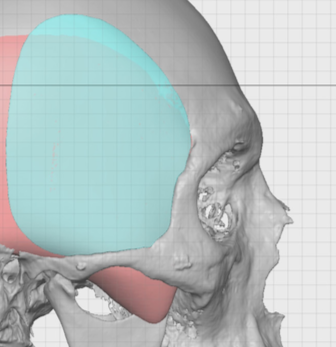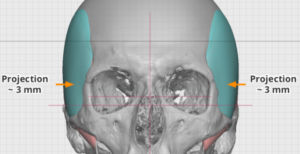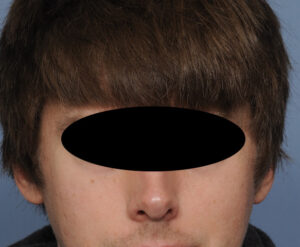Background: The temples are commonly recognized as the head/facial area that lies at the side of the eye just below the forehead. Anatomically at the skull level the temples is the juncture of four bones, the frontal, temporal, parietal and sphenoid. This joined bony areas create a deep concavity, known as the temporal fossa, which is covered by the thick temporalis muscle.
The shape of the external temples is highly influenced by the thickness of the soft tissues that occupy the fossa, mainly the muscle but there is also a fatty component as well. Since the temples are not a bone based area there are no known measurements that determine what is aesthetically acceptable or unacceptable. It has a more of a contour shape to it with it either having a smooth contour (as determined by a straight line from the bony temporal line of the forehead down across the zygomatic arch) or a slight concavity to it. Women almost always have the latter while some men have the former. A convex shape to the temples is seen as an undesired bulge.
The one aesthetic concept that is for certain in temporal aesthetics is an excessively deep concavity, due to either aging or disease, creates an unhealthy appearance. What is it often not appreciated is that a fuller temporal region can be associated with a stronger masculine appearance. Like the appearance of a wider jaw angle in the lower face, the thickness of the upper temporal muscle can have a similar masculinization effect.
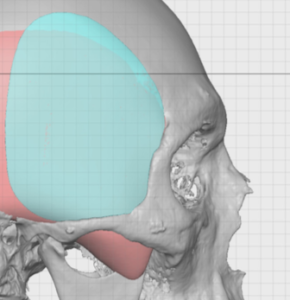
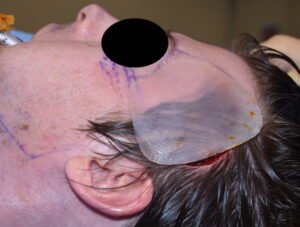

Case Highlights:
1) Temporal augmentation can be done as a part of facial masculinization effort.
2) Wider temples contribute to the appearance of a broader forehead. (forehead widening)
3) Custom temporal implants can widen the entire non-hair bearing temporal region back into the hairline.
Dr. Barry Eppley
Indianapolis, Indiana

